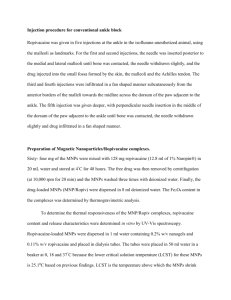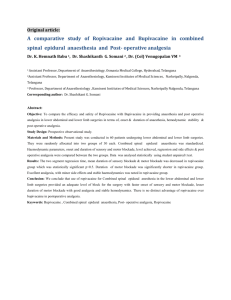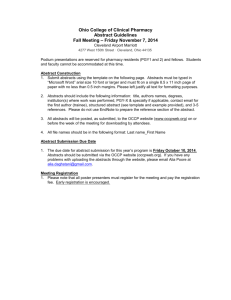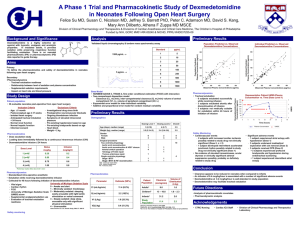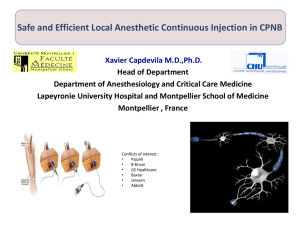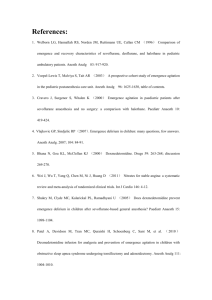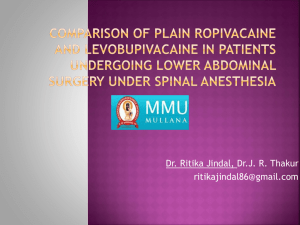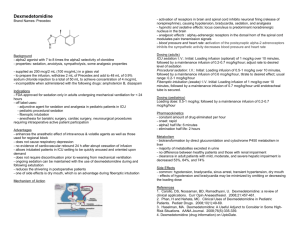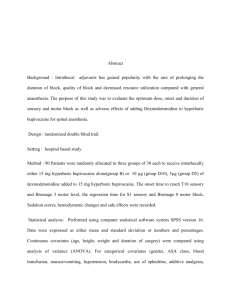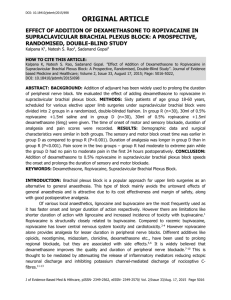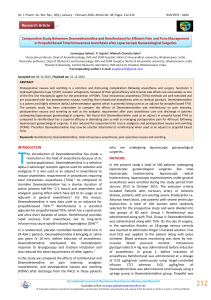Supplemental Digital Content 2: Methods for assessing ropivacaine
advertisement
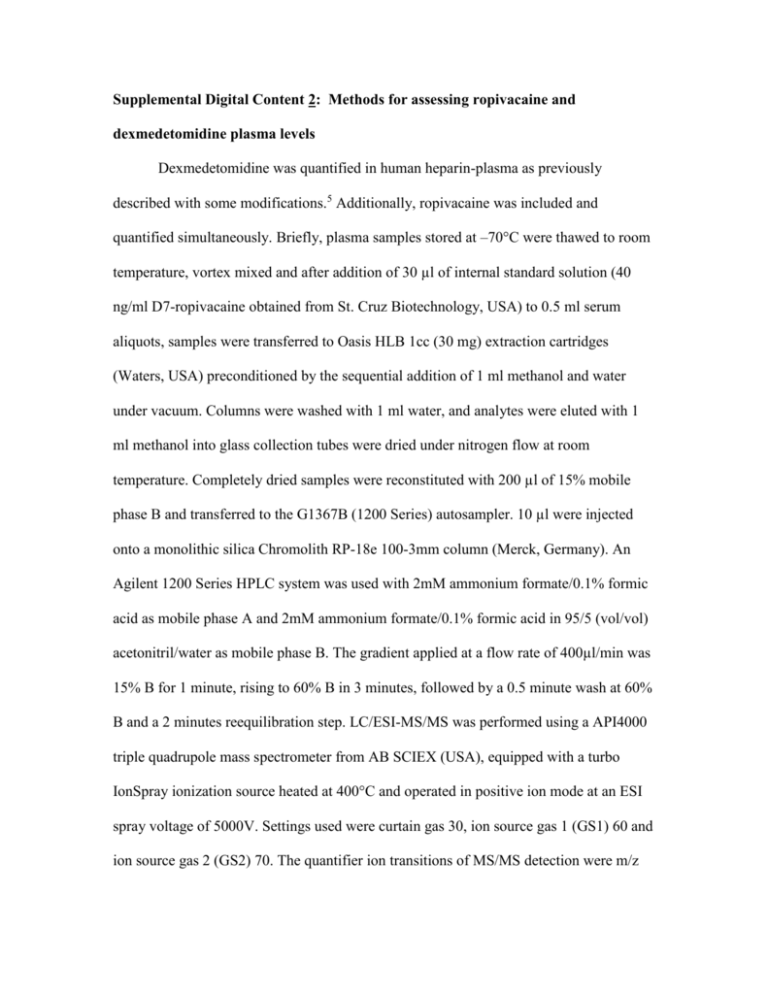
Supplemental Digital Content 2: Methods for assessing ropivacaine and dexmedetomidine plasma levels Dexmedetomidine was quantified in human heparin-plasma as previously described with some modifications.5 Additionally, ropivacaine was included and quantified simultaneously. Briefly, plasma samples stored at –70°C were thawed to room temperature, vortex mixed and after addition of 30 µl of internal standard solution (40 ng/ml D7-ropivacaine obtained from St. Cruz Biotechnology, USA) to 0.5 ml serum aliquots, samples were transferred to Oasis HLB 1cc (30 mg) extraction cartridges (Waters, USA) preconditioned by the sequential addition of 1 ml methanol and water under vacuum. Columns were washed with 1 ml water, and analytes were eluted with 1 ml methanol into glass collection tubes were dried under nitrogen flow at room temperature. Completely dried samples were reconstituted with 200 µl of 15% mobile phase B and transferred to the G1367B (1200 Series) autosampler. 10 µl were injected onto a monolithic silica Chromolith RP-18e 100-3mm column (Merck, Germany). An Agilent 1200 Series HPLC system was used with 2mM ammonium formate/0.1% formic acid as mobile phase A and 2mM ammonium formate/0.1% formic acid in 95/5 (vol/vol) acetonitril/water as mobile phase B. The gradient applied at a flow rate of 400µl/min was 15% B for 1 minute, rising to 60% B in 3 minutes, followed by a 0.5 minute wash at 60% B and a 2 minutes reequilibration step. LC/ESI-MS/MS was performed using a API4000 triple quadrupole mass spectrometer from AB SCIEX (USA), equipped with a turbo IonSpray ionization source heated at 400°C and operated in positive ion mode at an ESI spray voltage of 5000V. Settings used were curtain gas 30, ion source gas 1 (GS1) 60 and ion source gas 2 (GS2) 70. The quantifier ion transitions of MS/MS detection were m/z 201.1/95.1 for dexmedetomidine, m/z 275.1/126.2 for ropivacaine and m/z 282.2/133.2 for the internal standard. Analyst software version 1.5.2 was used for data collection and analyses. After confirming the absence of matrix interference, drug free human plasma (Department of Blood Group Serology and Transfusion Medicine, Paracelsus Medical University, Salzburg, Austria) was used to prepare calibrators and quality controls (QC) with dexmedetomidine (ABBLIS Chemicals LLC) and Ropivacaine (St. Cruz, USA). Five calibrators at concentrations of 0.02, 0.2, 2, 20 ng/mL dexmedetomidine and 2.5, 25, 250 and 2500 ng/mL ropivacaine were run in duplicate at the beginning and end of each batch. For each analytical run QC samples that were prepared by an independent, experienced co-worker were analyzed at concentrations of 35 and 250 ng/ml ropivacaine as well as 0.03 and 0.2 ng/ml dexmedetomidine in duplicate. Overall recovery was determined by comparing the peak areas from injection of SPE extracts to blank SPE extracts spiked at the same concentration after the SPE procedure in triplicate. Recovery rates at three tested concentrations were calculated to be greater than 75% for dexmedetomidine, and greater than 85% for ropivacaine and the internal standard, respectively. Lower limit of quantitation (LLOQ) was 10pg/ml for dexmedetomidine and 1ng/ml for ropivacaine. Inter-day (n=6) accuracy (%) was calculated to range from 89.2 to 104.6% for dexmedetomidine and 92.5 to 107% for ropivacaine. Inter-day (n=6) precision (CV %) ranged from 4.2 to 8.6% for dexmedetomidine and 3.1 to 6.2% for ropivacaine, respectively. Calibration curves were derived from ratios of the peak areas of dexmedetomidine or ropivacaine and the internal standard using 1/χ²-weighted linear least-squares regression of the area ratio versus the concentration of the corresponding internal standard.
